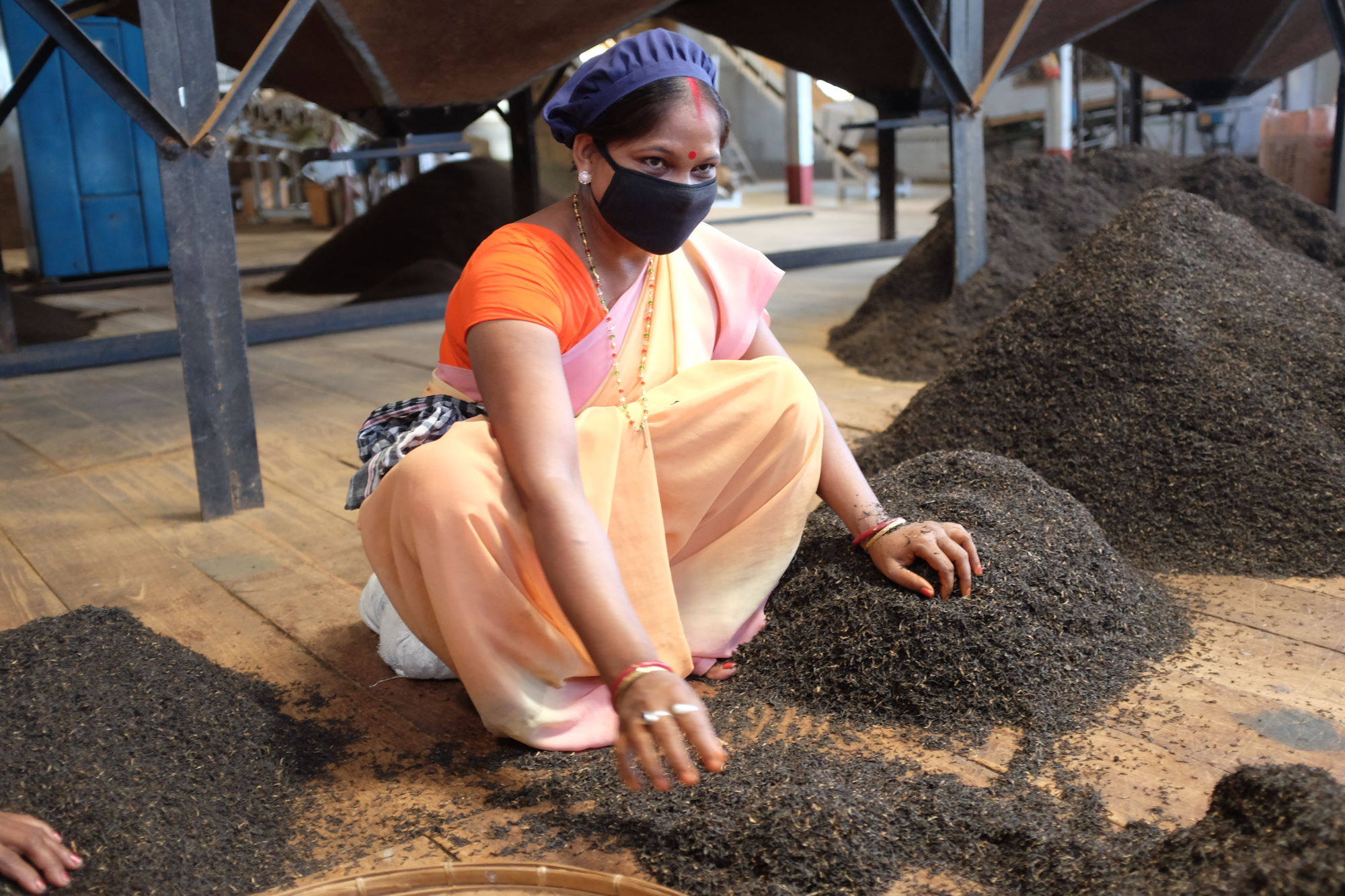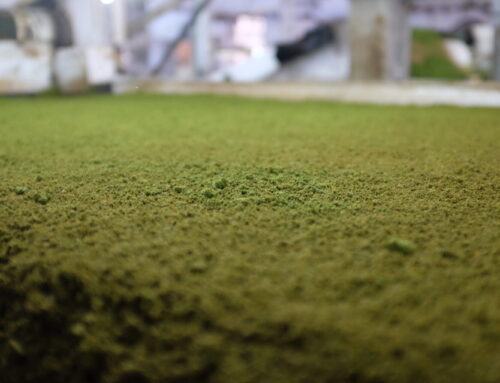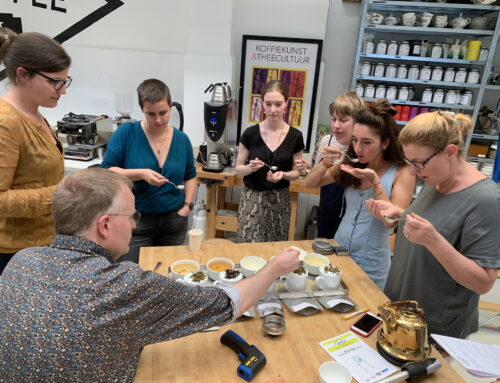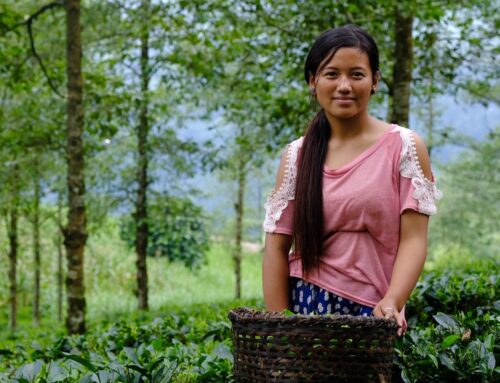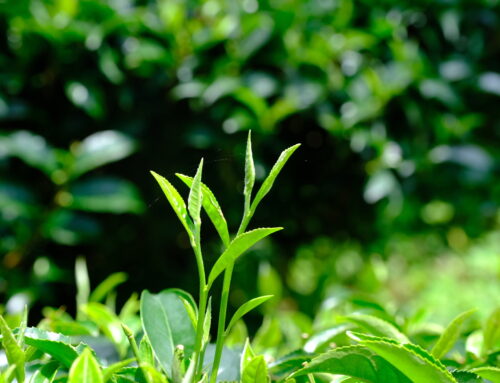Babylon
Let’s start by clearing up an international misunderstanding. When Chinese and Europeans talk about black tea, they are talking about two different tea classes. In China, “our” black tea is called Hong cha or: red tea. The reason they call it red tea in China is simple: they name the color of the infusion in your cup. And we? We name the color of the dry tea: the leaves. Is there no black tea in China? Certainly. This name is used for Post-Fermented Teas such as Pu Er.
What is the difference between these two classes? Post-fermented tea is green tea that is allowed to ferment. Fermentation is a process initiated by micro-organisms present in the tea.
How does black tea get its color? We call this process oxidation. The enzyme oxidase present in tea reacts with oxygen and this causes the tea leaves to turn brown. You can compare it to the browning you see on the bite surface after a while when you have taken a bite out of an apple.
Oxidation
Oxidation is the major difference between green tea and black tea. Green tea is not oxidised, black tea is. How do you prevent the green leaf from turning brown? This is done with the help of heat. By briefly heating the leaves, you kill the enzyme oxidase and thus prevent the oxidation process. This can be heated by pressing the leaves against the hot walls of a wok or by briefly steaming the leaves.
The oxidation of the leaf is partly responsible for the typical taste of black tea. Theoretically, you could make black and green tea from any tea plant. In practice this rarely happens. Some varieties of the tea plant lend themselves better to black tea, others to green tea.
Origin
Most black tea is produced in several African countries, India and Sri Lanka. Why is China missing from this list? The Chinese don’t drink a lot of black tea. People mainly drink green tea and Oolong. It does not alter the fact that they produce beautiful black teas!
Production
There are countless different ways to produce black tea. Nevertheless, the different steps in production are more or less the same.
At the beginning of the process, you decide whether you want small pieces to put in a tea bag, for example, or whether you want to leave the leaves intact as much as possible.
Orthodox
The production method that is aimed at keeping the leaf intact as much as possible is called the orthodox method.
This method consists of a number of steps:
Withering
During the withering process, the leafs are placed in a trough. Cold or warm air is blown through the leafs. By doing this, the leafs loses some of its moisture. As a result, the blade will break into pieces less during the following steps. In addition, an important chemical process is started that is very important for the final taste of the tea. Depending on leaf, temperature and humidity, this can take about 12 hours.
Rolling
Juices in the leaves ultimately give the tea its flavor. If the juices remain in the leaf, it will take a very long time before it ends up in your cup. By placing the leaf under a heavy rotating plate, the cells in the leaf break and the juices come out.
Oxidisation
The rolled leaf now comes into contact with oxygen. This gives the leaves a brown color and its typical taste. Depending on the flavour the tea maker is looking for, the oxidation time can range from 20 minutes to over 8 hours.
Drying
The leaf loses its excess moisture and the chemical processes stop. Depending on the type of tea, the leaf will still contain about 3% moisture afterwards.
Sorting
During the whole process parts of leaves break off. By sieving the leaf several times, small and large parts are separated from each other. The different formats are marketed separately.
Every country has its own way of indicating whether it is high or low quality. In countries where the English have been involved in tea production such as India, Sri Lanka and several African countries you will see a whole row of abbreviations on the packaging such as: FTGFOP. This stands for Finest Tippy Golden Flowery Orange Pekoe and indicates that it is a high quality. English pranksters have come up with their own explanation for the abbreviation: Far too good for ordinary people.
Did you know that the word “Orange” in the abbreviation probably refers to our House of Orange? With this, the VOC would have wanted to indicate the link with the House of Orange.
CTC
The method in which the leaves are deliberately chopped into small pieces is called the CTC method. A method invented in 1930-1931 by William Mc Kercher and widely introduced in Africa, India and Sri Lanka during the 1950s and 1970s.
CTC stands for: Cut (or Crush), Tear, Curl. After they have wilted on a belt or table for a number of hours, the leaves go over a conveyor belt on which they are crushed, torn and curled by rollers with sharp teeth. The small pieces are handy in tea bags because you have your cup of tea within a minute. If you put large leaves in bags, the steeping time would be much longer and you would need a much larger bag because the tea needs more room to release flavour.
The process of drying and sorting is similar to that of orthodox processed tea.
Selecting a black tea
When you are in a tea shop, you often get dizzy from the huge choice of black teas. How do you make a choice from this large range? An easy answer would be: try it out! However, I would like to help you on your way to make the right choice.
India Assam: Region of North East India: full bodied, malty, astringent. In India, herbs and milk are added to the tea (Masala Chai).
India Darjeeling: Small region in Northern India. Flavors vary with the difference in picking time from floral to sweet and full.
Sri Lanka: In the tea world people still often use the old name: Ceylon. Different regions give completely different aromas: from citrus to cypress, from malty to round.
China: Especially in the provinces Yunnan, Fujian and Anhui beautiful sweet teas are produced like Hong Cha Bi Luo, the Golden Yunnan, Jin Jun Mei, Keemun and Lapsang. Teas with little or no astringency. Use water at 80℃ to enjoy that sweetness in your cup.
Malawi: In addition to a lot of low-quality tea, this country also produces beautiful teas. Tea from Satemwa Tea Estate in particular is one to try! Full, complex with a beautiful red infusion color!

